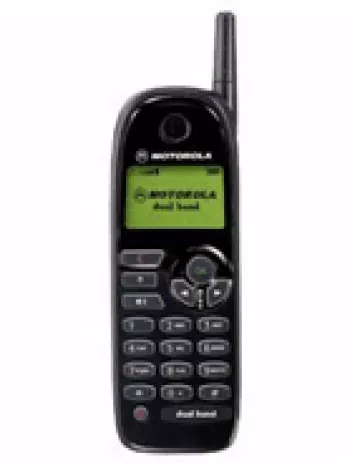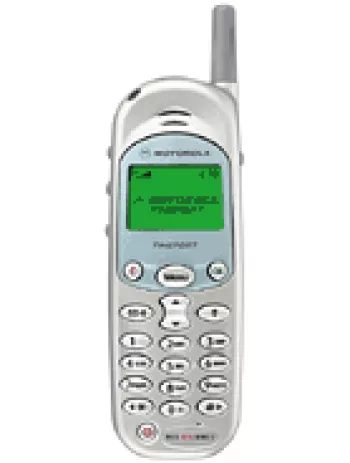
Overview of Motorola M3288
Released in 1999, the Motorola M3288 marked a significant era in mobile phone technology. As a feature phone, it was designed to cater to basic communication needs at a time when smartphones were still a futuristic concept. The phone was known for its durability, simplistic design, and essential features that appealed to a broad audience at the time.
Network Technology
The Motorola M3288 operated on GSM technology, specifically supporting the 900/1800 MHz bands. Unlike the more advanced mobile devices of today, this phone did not have support for GPRS or EDGE networks, emphasizing its fundamental role as a communication device.
Design and Build
The phone's physical dimensions were 140 x 50 x 25 mm, with a volume of 150 cc, making it a relatively compact device for its time. Weighing 170 grams, it was heavier than many of today's smartphones, but its weight contributed to its overall robustness. The M3288 used a Mini-SIM card, which was the standard at the time.
Display
The Motorola M3288 featured a monochrome graphic display with a resolution of 96 x 32 pixels. The screen was capable of displaying up to four lines of text with twelve characters per line. This simple display was sufficient for reading messages and viewing basic phone data without consuming excessive battery life.
Memory and Storage
This device did not come equipped with expandable storage options, such as a memory card slot. The phonebook relied solely on SIM card storage, which was typical for phones of that era. Call records were limited to 10 dialed calls, 5 received calls, and 5 missed calls, reflecting the phone's focus on voice communication over data storage.
Sound and Alerts
Sound capabilities on the M3288 were basic. It did not include a loudspeaker and used monophonic ringtones for alerts. Furthermore, it lacked a 3.5mm headphone jack, emphasizing its role as a straightforward communication device without multimedia functionalities.
Communication Features
The phone's communication abilities were limited to sending and receiving SMS messages. It lacked advanced features such as WLAN, Bluetooth, and GPS, focusing solely on its primary purpose as a mobile phone. The absence of a built-in radio and USB support highlighted the device's simplicity.
Additional Features
Additional functionalities of the Motorola M3288 included support for messaging in up to 27 languages. However, it did not feature a web browser, clock, alarm, or games, underlining its primarily utilitarian nature. The lack of Java support also meant that the device could not run additional applications or modifications.
Battery Life
The device was powered by a removable NiMH battery with a capacity of 700 mAh. Remarkably, this provided up to 110 hours of standby time and around 230 minutes of talk time, a testament to the phone's efficient power usage, owing to the absence of power-draining features found in contemporary smartphones.
Legacy and Discontinuation
The Motorola M3288 was eventually discontinued, as the mobile industry rapidly advanced towards more sophisticated and feature-rich phones. Despite its basic functionality by today's standards, it served as a foundation for the development of future mobile technology, illustrating the evolution of consumer expectations and technological capabilities over time.
Key Features of Motorola M3288
- GSM Technology: Supports GSM 900 / 1800 bands, ensuring basic cellular connectivity.
- Monochrome Graphic Display: Simple display with a resolution of 96 x 32 pixels.
- Compact Design: Dimensions of 140 x 50 x 25 mm and a weight of 170 g for easy handling.
- Basic Call Management: Store up to 10 dialed, 5 received, and 5 missed calls.
- SMS Messaging: Allows for basic text messaging capabilities.
- Multi-language Support: Supports 27 different languages for diverse user-friendly interaction.
- Removable Battery: Equipped with a 700 mAh NiMH battery, offering up to 110 hours of standby time and 230 minutes of talk time.
Disadvantages of Motorola M3288
- Lacks modern connectivity options such as GPRS, EDGE, WLAN, Bluetooth, USB, and positioning.
- Discontinued status since its release in 1999 makes it an obsolete model.
- Heavy weight of 170 g compared to modern mobile phones.
- Monochrome graphic display with low resolution (96 x 32 pixels) offering limited visual experience.
- No expandable memory card slot, limiting storage capacity.
- Lacks a camera for taking photos.
- No loudspeaker and 3.5mm jack, restricting audio output options.
- Supports only monophonic ringtones and limited call records (10 dialed, 5 received, 5 missed).
- No built-in clock or alarm features.
- Absence of games and Java support reduces entertainment functionality.
- Uses a removable NiMH 700 mAh battery, which offers limited battery life by modern standards.
View Also
More Phones
All Rights Reserved +14266 Phones © Mobilawy 2025

























